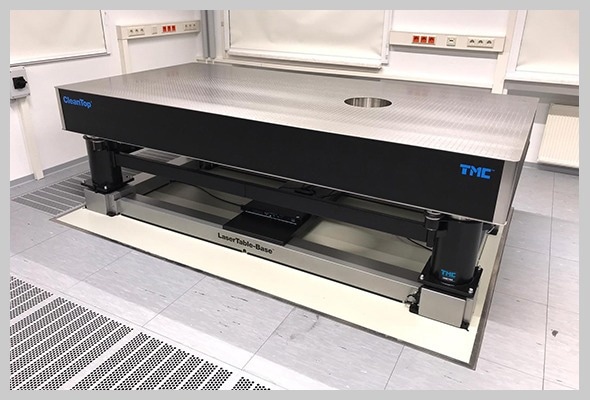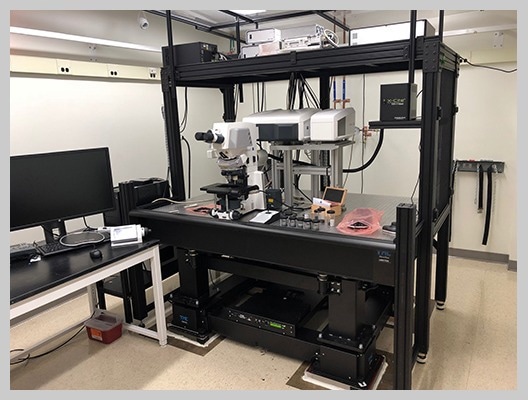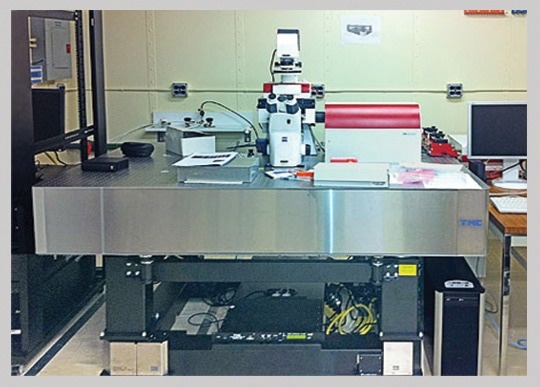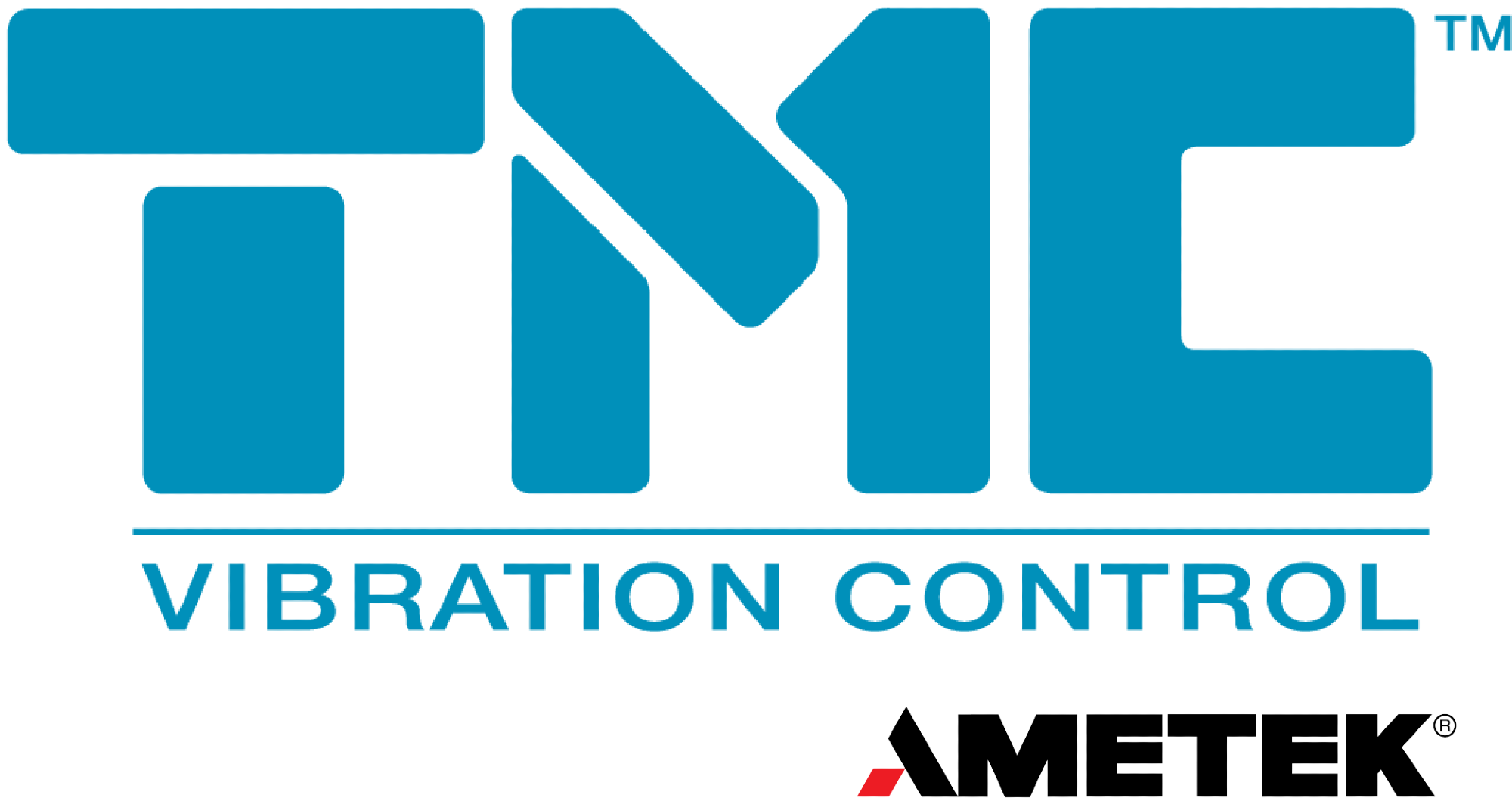Wes Wigglesworth, Product Manager at TMC, spoke with AZoM about TMC’s sophisticated hybrid vibration isolation solution for optical tables.
To begin, can you give us an introduction to Laser Tables and how they are typically supported?
Many physics, chemistry, laser, and photonics research facilities rely on laser tables, also known as optical tables. These are large tables made of a rigid honeycomb core and outside steel plates, or "skins".

Image Credit: AMETEK, Inc.
The top skin is usually drilled and tapped with a grid of holes to accommodate components and instruments. The table itself doesn’t reduce floor vibration: this is done by the framework that supports the table.
What is a LaserTable-Base™, and how is it unique in the industry?
The LaserTable-Base™ is an innovative hybrid vibration isolation solution for optical tables, as well as any other device or instrument that is sensitive to floor and building vibrations.
It outperforms typical pneumatic isolation in terms of total vibration isolation, ranging from sub-Hz to very high-frequency floor vibration.
Whilst pneumatic passive systems are great at isolating higher frequencies, they amplify vibration in the vital 1 to 3 Hz region due to their own natural resonance.

Image Credit: AMETEK, Inc.
By using TMC STACIS® and Micro-g® pneumatic technology, the LaserTable-Base™ overcomes these restrictions.
This patented technology uses piezoelectric actuators and inertial vibration sensors to cancel, not amplify, very low-frequency vibration.
The LaserTable-Base™ integrates these two technologies into a single integrated canceling system. The combined effect of two isolation systems in series produces vibration cancellation at very low frequencies, as well as unparalleled levels of high-frequency isolation.
It’s a unique product in the commercial market.
Does it matter which one goes on top, and why is this?
Yes, it’s actually very important. The first level of isolation must be extremely stiff to sustain the second level.
This impedance mismatch, like two springs with drastically differing natural frequencies, significantly decreases or eliminates isolation degradation when isolators of identical resonance are "stacked."
The first tier of the LaserTable-Base™ incorporates STACIS technology and is intrinsically stiffer than the second-tier passive pneumatic isolator.
Can this system be easily configured for a custom application?
TMC is well-known for working closely with engineers and researchers to create tailor-made solutions to their exact requirements. The LaserTable-Base™ is no exception.
TMC can adjust the height, load capacity, length, and width. They have even created a mechanism which supports an "L"-shaped table.
What was the main inspiration behind the development of the LaserTable-Base and its related technologies?
Years ago, TMC collaborated with a lab to create a separate STACIS floor platform to support an optical table using standard pneumatic isolation.
STACIS was the first hard-mount piezoelectric active cancellation technology, invented in the 1990s. This was a real "ah-ha" moment for TMC, and it led to the development of the LaserTable-Base™. A cost-effective solution, this optical table combines the two technologies into a single complete support frame.

Image Credit: AMETEK, Inc.
During system development, what were some of the main challenges you encountered when combining two isolation systems, and how were these overcome?
Dynamic range and floor noise are substantial challenges for active vibration cancellation control systems. It is essential to design a system that includes inertial sensors, amplifiers, and actuators that allow for a wide dynamic range while maintaining a low noise floor.
The next concern with these stacking systems is that, if manufactured poorly, the second-tier pneumatic isolator may essentially "give back" the vibration in the 1-3 Hz band that the first tier eliminated.
TMC's extensive experience building highly damped pneumatic systems and various technologies, including MaxDamp and UltraDamp™, helped them to develop the perfect solution.
How does someone know when to use LaserTable-Base vs. a single-stage isolation system for their application?
Most commercial equipment comes with a vibration specification, which make it simple to measure your floor vibration, compare it to the spec, and select the best solution. TMC's sales and application teams are also available to help with this.
Many applications, such as single-molecule biology, laser interferometry, and quantum physics, require vibration levels that are lower than those of the most modern and sensitive electron microscopes.
When such high sensitivity is needed, or in upper-floor facilities, extreme attenuation of both extremely low frequency (2 Hz and below) and high frequency is required, which is typically only given by a system like the LaserTable-Base™.
Can you give an example of when the LaserTable-Base has been used to meet strict floor vibration criteria requirements in a very noisy environment?
One researcher, Dr. Aliaksei Charnukha, specified a table with vibration levels ranging from VC-E to VC-F. Their cryogenic nano-optical instrumentation was located near road traffic, which was not ideal but their options were limited.
The LaserTable-Base™ was installed, lowering the floor vibration levels from above VC-E to below VC-G.

This information has been sourced, reviewed and adapted from materials provided by TMC.
For more information on this source, please visit TMC.